D7200 DSLR imaging: ISS, Planets, M31 and M33 Galaxies
Posted: 9 October 2020
Wednesday, 7 October 2020, had clouds with a cloudy night forecast so I skipped opening the observatory that night. Thursday, 8 October, had some clouds until late afternoon when the sky began clearing, although the sky was hazy.
|
Open: Thursday, 8 October 2020, 1805 MST Temperature: 79°F |
Session: 1533 Conditions: Mostly clear, hazy, breezy |
Equipment:
12" f/8 LX600 w/StarLock
2" 24mm UWA eyepiece
2" 14mm 100° eyepiece
2" 5.5mm 100° eyepiece
2" 2X Powermate
2" 4X Powermate
Camera:
D7200 DSLR
1812 MST: LX600 ON, StarLock OFF, High Precision OFF.
Updated the TLE for this night's pass of the International Space Station (ISS).
1818 MST: viewed Jupiter, 102X. Two moons off to the side of the disk and one moon shadow in transit were visible.
I then tried two tips from Tom Dobbins that were published in the November 2020 issue of Sky & Telescope magazine. The first tip was to use two star diagonals to remove the left-right mirror imaging with a SCT telescope. I mounted my old OPT 2" diagonal to the telescope and then mounted the Meade 2" diagonal on the OPT diagonal. It worked. And using two diagonals can put the eyepiece at a convenient position regardless of the telescope orientation. I then tried his second tip of using each filter of a Variable Polarizing Filter set but as separate filters, one on the diagonal and the other on an eyepiece. The eyepiece is then rotated to change the amount of dimming by the Variable Polarizing Filters. When you leave the filters attached to each other you have to remove the eyepiece to change the dimming, so this tip is way more convenient. Thanks to Tom for both of these excellent tips!
1837 MST: viewed Saturn and 3 moons, 102X.
I then mounted the D7200 DSLR at prime focus for the upcoming ISS pass. Checked the alignment of both finderscopes. Focused on Saturn and locked the 12" primary mirror.
1947 MST: all was now ready for the ISS pass. I relaxed on the observatory patio bench for a few minutes. The breezes had calmed down.
1911 MST: did a video recording (720p, 60fps, 1/1600sec, ISO 1600) of the ISS as it moved across the sky. Tracking was not very good on this pass and the space station was not very close (line-of-sight). Here are two views of the station from different locations during the pass.
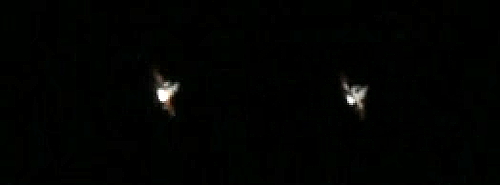
After the pass was over, bright Mars was visible above the hill to the east. I slewed to Jupiter to image it with the D7200. This is a stack of 3678 video frames (720p, 60fps, 1/250sec, ISO 400, 1 minute).

I then mounted the D7200 DSLR at prime focus + 4X Powermate + 2X Powermate. Seeing was not very good (haze?) but I tried high magnification imaging anyway, with these not very good results.
Jupiter, 3759 video frames (720p, 60fps, 1/60sec, ISO 3200, 1 minute)
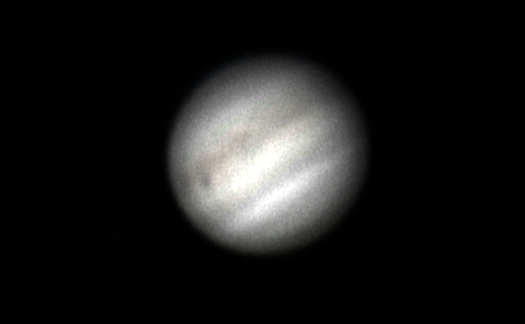
Saturn, 3732 video frames (720p, 60fps, 1/60sec, ISO 20000, 1 minute)
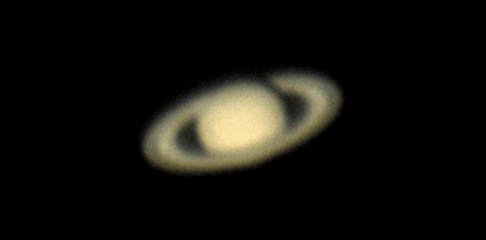
1955 MST: viewed M31 (Andromeda Galaxy), 102X. The view was pretty good.
I removed one of the finderscopes and mounted the D7200 DSLR with 70-300mm lens piggyback on the 12" LX600 telescope using the ScopeStuff Camera Mount. Did framing tests at focal length 70mm and 200mm for both M31 and M33.
2026 MST: StarLock ON.
I imaged M31 (Andromeda Galaxy) and M33 (Triangulum Galaxy), StarLock autoguided, 5 minutes, ISO 5000, White Balance 5560K, FL 200mm. These are the full-frame images.
M31 (Andromeda Galaxy), M32, and M110 galaxies
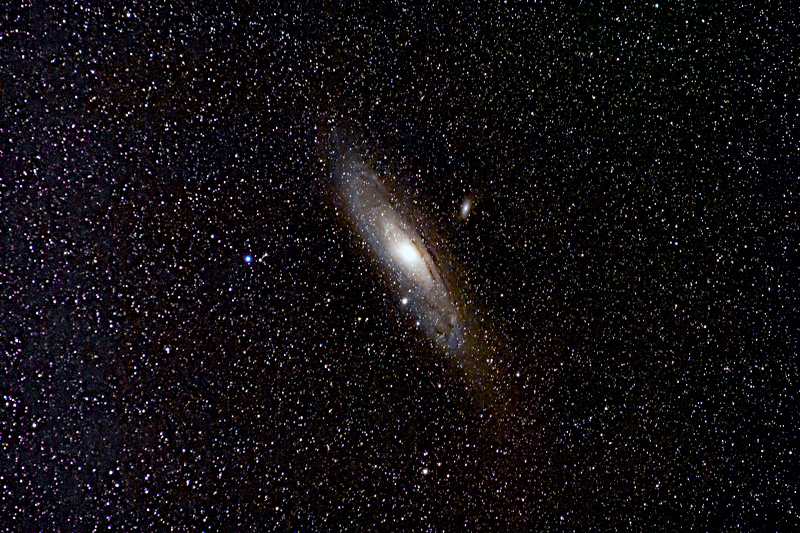
M33 (Triangulum Galaxy)
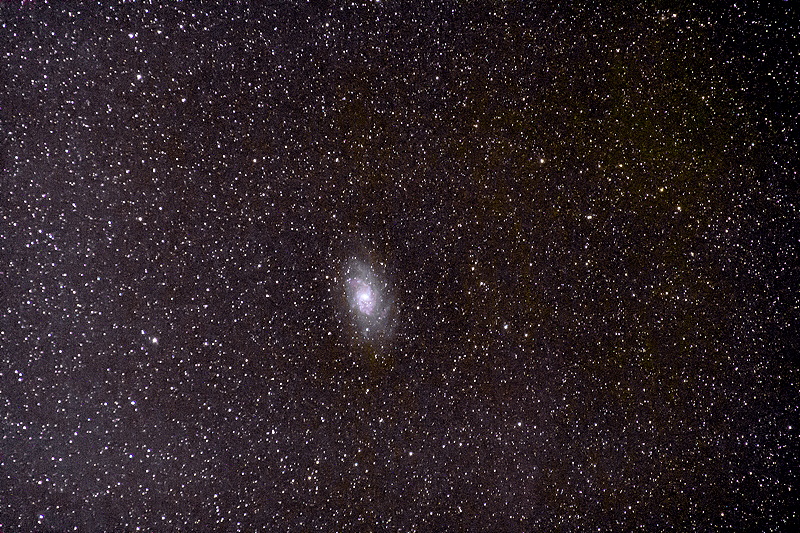
2118 MST: StarLock OFF.
Ended piggyback imaging.
Viewed M33 (Triangulum Galaxy), 102X and 174X. No spiral arms were visible this night due to the poor conditions. I have seen them on other sessions. Viewed M31 (Andromeda Galaxy), 174X.
2133 MST: viewed Mars, 174X. Then viewed Mars, 443X, using the Variable Polarizing Filter. Rotating the eyepiece made finding the "sweet spot" to dim the brightness of Mars as it nears opposition (next week) easy. Unfortunately seeing was not good.
2143 MST: took a Sky Quality reading using the Unihedron SQM-L. The reading was worse than normal (that haze). Reported the result to Globe at Night.
2150-2205 MST: relaxed on the bench to let Mars rise a little higher in the sky. M31 (Andromeda Galaxy) was visible to the naked eye, but M33 (Triangulum Galaxy) was not. I have seen M33 with the naked eye from here so it should have been visible had conditions been better. I then used 12x50 binoculars to view M31 and its satellite galaxies M32 and M110, M33, M45 (the Pleiades), and the Double Cluster).
Returned to the telescope and checked out the view of Mars, 443X. Still not very good, but at least Syrtis Major, the South Polar Cap, and the North Polar Hood were visible. I decided to try high magnification imaging.
Mounted the D7200 DSLR at prime focus + 4X Powermate + 2X Powermate. Focusing was difficult due to the poor conditions. This is a stack of 3663 video frames (720p, 60fps, 1/250sec, ISO 3200, 1 minute), North at top.
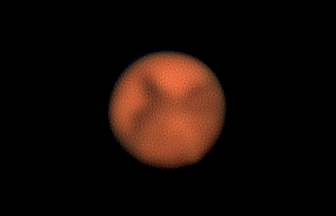
2237 MST: ended imaging.
2244 MST: viewed Mars, 102X.
2246 MST: LX600 OFF.
|
Close: Thursday, 8 October 2020, 2256 MST Temperature: 70°F |
Session Length: 4h 51m Conditions: Clear, haze, SQM 21.01 |
Comments are welcome using Email. Twitter users can use the button below to tweet this report to their followers. Thanks.
Cassiopeia Observatory Home Page
Copyright ©2020 Michael L. Weasner / mweasner@me.com
URL = http://www.weasner.com/co/Reports/2020/10/09/index.html
